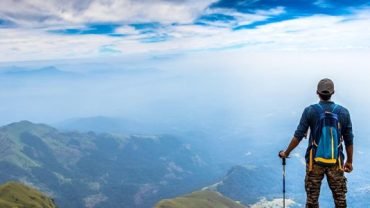Trekking to Skandagiri, located near Bangalore, India, is a popular adventure that attracts nature lovers and thrill-seekers alike. Renowned for its stunning views, particularly at sunrise, and its unique landscape dotted with ancient ruins, Skandagiri offers a rewarding experience for trekkers of all levels. However, despite its accessibility, many trekkers make common mistakes that can turn an exciting adventure into a challenging ordeal. To ensure that your trek to Skandagiri is enjoyable and safe, it’s important to be aware of these pitfalls and how to avoid them. This guide will delve into the top mistakes trekkers make during their Skandagiri trek and offer practical tips to help you have a memorable journey.
1. Underestimating the Trek Difficulty
One of the biggest mistakes trekkers make is underestimating the difficulty of the Skandagiri trek. While the trek is relatively short (approximately 8 kilometers round trip), it involves steep ascents and rocky paths that can be challenging, especially for inexperienced trekkers. Before embarking on your journey, take the time to assess your fitness level and prepare accordingly.
Tip: Start with shorter, easier treks to build your stamina and confidence before tackling Skandagiri. Familiarize yourself with the route by checking online resources or trekking forums to understand what to expect.
2. Poor Timing
Choosing the right time for your trek is crucial. Many trekkers fail to consider the weather conditions, leading to uncomfortable or even dangerous situations. Skandagiri can get extremely humid and hot during the day, making the trek strenuous. Conversely, night treks during the monsoon season can be risky due to slippery trails and reduced visibility.
Tip: The best time to trek Skandagiri is during the cooler months, from October to March. If you’re planning a night trek, start early to reach the peak in time for sunrise, ensuring you have ample daylight for your descent.
3. Inadequate Preparation
Another common mistake is insufficient preparation in terms of gear, supplies, and knowledge about the trek. Many trekkers arrive without the necessary equipment, food, or water, which can lead to exhaustion or dehydration during the climb.
Tip: Make a checklist of essential items before your trek. This should include comfortable trekking shoes, weather-appropriate clothing, a reliable backpack, plenty of water, energy snacks, a first aid kit, a flashlight, and a power bank for your phone. Ensure your shoes are broken in to avoid blisters.
4. Ignoring Safety Precautions
Safety should always be a priority when trekking. Many trekkers overlook basic safety precautions, such as informing someone about their trekking plans or not carrying a first aid kit. This can be especially dangerous if an injury or unexpected event occurs.
Tip: Always let someone know your plans, including your expected return time. Carry a first aid kit, and familiarize yourself with basic first aid procedures. If trekking in a group, establish a meeting point in case anyone gets separated.
Explore More: kodaikanal tourism | Hampi tour | Wayanad tourist | kotagiri trip
5. Not Respecting Nature
Trekking in natural areas comes with a responsibility to protect the environment. Unfortunately, some trekkers disregard this by leaving behind trash, disturbing wildlife, or damaging plants and ecosystems. This behavior not only harms the environment but can also lead to stricter regulations for future trekkers.
Tip: Practice Leave No Trace principles. Carry out all your trash, avoid picking plants, and stay on designated trails. Educate others in your group about the importance of preserving the natural beauty of Skandagiri.
6. Skipping the Warm-Up
Many trekkers overlook the importance of warming up before starting their trek. Jumping straight into a strenuous activity can lead to muscle strains and fatigue early in the hike.
Tip: Take 10-15 minutes before starting your trek to stretch and warm up your muscles. Focus on dynamic stretches that target your legs, hips, and back to prepare your body for the uphill climb.
7. Overpacking or Underpacking
Finding the right balance in what to pack can be tricky. Some trekkers overpack, bringing unnecessary items that weigh them down, while others underpack and miss essential supplies.
Tip: Pack wisely by focusing on the essentials. A lightweight backpack with just enough food, water, and gear will make your trek more enjoyable. Review packing lists from experienced trekkers to determine what items are truly necessary.
8. Ignoring the Importance of Hydration
Dehydration can quickly sap your energy, leading to fatigue and decreased performance. Unfortunately, many trekkers fail to drink enough water before and during their hike.
Tip: Hydrate well in the days leading up to your trek, and carry at least 2-3 liters of water with you. Drink regularly during the trek, even if you don’t feel thirsty. If you’re trekking in a group, remind each other to stay hydrated.
9. Not Bringing Navigation Tools
While Skandagiri is a popular trekking destination, some trails can be less well-marked, and getting lost can be a real concern. Many trekkers rely solely on their phones for navigation, which can be risky due to poor signal reception in remote areas.
Tip: Bring a physical map of the area and a compass, and consider downloading offline maps on your phone before you go. Familiarize yourself with key landmarks to help you stay oriented.
10. Ignoring the Group Dynamics
If you’re trekking in a group, overlooking group dynamics can lead to issues such as disagreements on pace or route. This can detract from the overall experience and create tension among trekkers.
Tip: Establish a clear plan before you begin. Agree on a comfortable pace, decide on regular breaks, and communicate openly about any concerns during the trek. Check in with group members frequently to ensure everyone is comfortable and happy with the journey.
11. Failing to Enjoy the Journey
Lastly, many trekkers become so focused on reaching the summit that they forget to enjoy the journey. Skandagiri offers stunning views, interesting flora and fauna, and opportunities for photography along the way.
Tip: Take time to appreciate your surroundings. Stop for breaks to enjoy the scenery, take photos, and connect with fellow trekkers. Remember that the trek is about the experience, not just the destination.
Conclusion
Trekking to Skandagiri can be an exhilarating and fulfilling experience, provided you take the necessary precautions and plan effectively. By avoiding these common mistakes—underestimating the trek difficulty, poor timing, inadequate preparation, ignoring safety precautions, and more—you can enhance your adventure and ensure a safe and enjoyable trek.
As you prepare for your journey, keep these tips in mind and remember to embrace the beauty of nature and the camaraderie of fellow trekkers. Whether you’re chasing the perfect sunrise, exploring the rugged terrain, or simply enjoying the thrill of adventure, your Skandagiri trek can become a cherished memory. So gear up, plan wisely, and embark on your Skandagiri adventure with confidence! Happy trekking!




Comment (0)